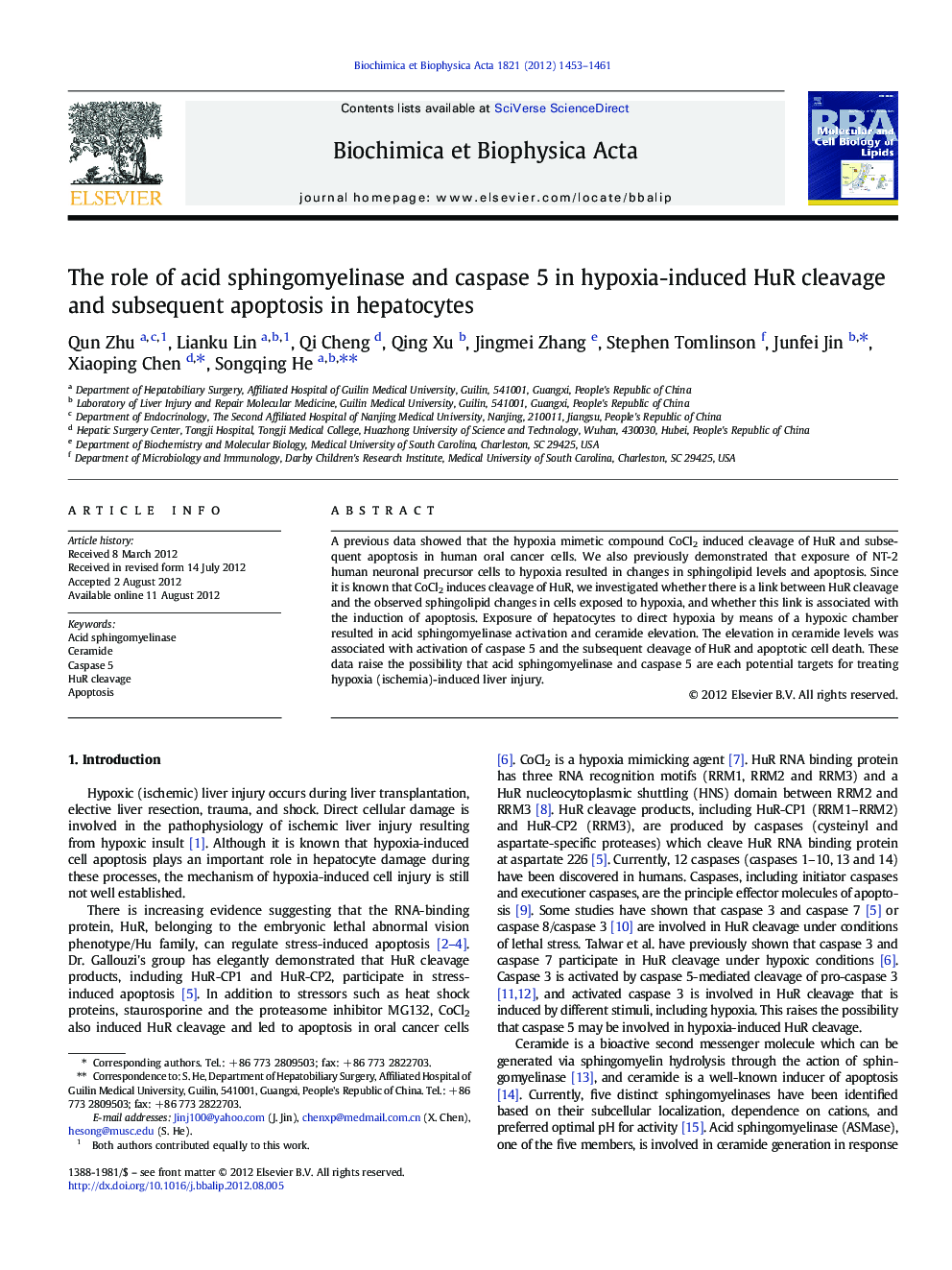| کد مقاله | کد نشریه | سال انتشار | مقاله انگلیسی | نسخه تمام متن |
|---|---|---|---|---|
| 1949373 | 1537747 | 2012 | 9 صفحه PDF | دانلود رایگان |

A previous data showed that the hypoxia mimetic compound CoCl2 induced cleavage of HuR and subsequent apoptosis in human oral cancer cells. We also previously demonstrated that exposure of NT-2 human neuronal precursor cells to hypoxia resulted in changes in sphingolipid levels and apoptosis. Since it is known that CoCl2 induces cleavage of HuR, we investigated whether there is a link between HuR cleavage and the observed sphingolipid changes in cells exposed to hypoxia, and whether this link is associated with the induction of apoptosis. Exposure of hepatocytes to direct hypoxia by means of a hypoxic chamber resulted in acid sphingomyelinase activation and ceramide elevation. The elevation in ceramide levels was associated with activation of caspase 5 and the subsequent cleavage of HuR and apoptotic cell death. These data raise the possibility that acid sphingomyelinase and caspase 5 are each potential targets for treating hypoxia (ischemia)-induced liver injury.
► Hypoxia led acid sphingomyelinase activation and ceramide increase in hepatocytes.
► Ceramide led to activation of caspase 5 in hepatocyte exposure to hypoxia.
► Activation of caspase 5 led to HuR cleavage that resulted in cell apoptosis.
► Acid sphingomyelinase and caspase 5 may be targets for liver damage by hypoxia.
Journal: Biochimica et Biophysica Acta (BBA) - Molecular and Cell Biology of Lipids - Volume 1821, Issue 12, December 2012, Pages 1453–1461